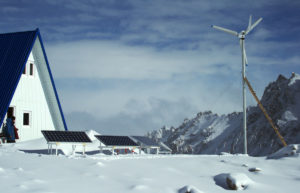COP26 is the 26th iteration of the Conference of the Parties to the UN Framework Convention on Climate Change (UNFCCC). This annual meeting brings together the 197 members of the convention to take concerted action on climate change.
At the meeting, country representatives discuss issues such as climate change mitigation (the reduction of greenhouse gas emissions that cause the planet to warm), adaptation to irreversible environmental impacts caused by climate change, and financing to support developing countries in their efforts to move away from fossil fuels and become more resilient to the impacts of climate change.
The first UN climate talks were held in Berlin, Germany, in 1995. At the historic COP21 meeting, held in 2015, countries approved the Paris Agreement. This was a landmark deal under which each country was to submit its own pledges on emissions reductions and adaptation measures, in a collective effort to keep global warming “well below 2 degrees Celsius” compared with pre-industrial levels. They also set the aspirational target of keeping warming within 1.5C.
When and where will COP26 be held?
This year, the meeting will be held in Glasgow, UK, from 31 October to 12 November. The UK will share the presidency with Italy, which is hosting the last ministerial meeting before the conference, as well as the youth forum on climate change. The forum brought together young activists from all over the world and political leaders from Italy, the UK and the UN.

Why is COP26 important?
This year’s COP is the most significant climate meeting since 2015, when the Paris Agreement was launched. Countries are now expected to agree on a set of robust guidelines for the implementation of the agreement. These include rules on how to measure and report each country’s carbon emissions, and how to increase ambition over time.
A first version of the guidelines, known as the ‘rulebook’, was worked out in past meetings, but so far countries have been unable to agree on important points. These include how to trade emissions reduction tokens, making sure that they are not ‘double counted’, budgeted for by both the selling and buying party. While this may seem like a technicality, the success of the Paris Agreement depends on whether such details are ironed out at COP26 or not.
At the meeting, countries will also be expected to raise their climate ambitions, building on their current climate pledges, or Nationally Determined Contributions (NDCs). China, Japan, South Korea, France and the UK have already set deadlines for their economies to become carbon neutral, meaning they will emit less than they are able to absorb. Other major economies, including India, are expected to take further action to change the trajectory of their emissions growth towards a clean energy transition.
What could COP26 mean for South Asia?
South Asian countries are among the most at risk from climate change impacts such as droughts, abnormally powerful cyclones and other disasters, erratic monsoons and altered water cycles in ecologically fragile regions such as the Himalayas. South Asia is one of the regions likely to be most impacted by climate change-induced migration and displacement.
Limiting global warming is a matter of life and death for communities struggling to cope with weather extremes, and who lack the economic resources to adapt. Like in most of the developing world, South Asian nations rely on financial support from their richer counterparts to enhance mitigation and adaptation, and meet their pledges under the Paris Agreement. At COP26, South Asian leaders will hold rich nations accountable, while presenting their own more ambitious climate pledges.









